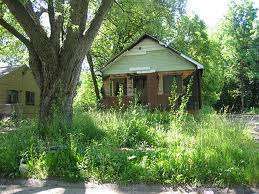Memphis City Schools Superintendent Kriner Cash’s announcement that 50 city schools should be closed was right on target.
It also hints at a much larger problem: Too many City of Memphis facilities are in the wrong places.
They weren’t once, but they are now.
It’s why Supt. Cash is faced with the prospects of closing so many schools that are operating at low capacities because their locations are now in less populated parts of Memphis. It’s also why City of Memphis will have to do the same when it comes to community centers, libraries, police stations and fire stations.
Built for Another Time
The 1970 population for Memphis was 623,988. The 2009 population of Memphis was 635,626, according to city estimates. The problem is this: To maintain that population, Memphis has almost doubled in land area through annexation – from 178 square miles to 346 square miles.
In other words, in propping up its population, Memphis has sliced its density from 3,506 people per square mile to today’s 1,837 square miles. It means that the population inside the 1970 city limits of Memphis has fallen about 30%. Densities in a number of neighborhoods have fallen by half, but public facilities are located as if we are still living in the Memphis of 40 years ago.
Here’s another way to look at it. Memphis is the #555 in the ranking of cities with the largest populations; however, Memphis is #168 in land area.
Because of it, city taxpayers are paying for once busy facilities that are now underused and mislocated. That’s why the option is not simply closing old facilities, but relocating them to where they are needed in light of population shifts.
Sending a Message
That’s why when Superintendent Cash looks at a map of Memphis, he sees dozens of schools operating at half capacity. There are 21 elementary schools with less than 75% capacity, and six of them are less than 50%. There are about 11 middle schools with capacities of less than 75% and four with less than 40%. Finally, there are about five high schools with less than 75% capacity, with two less than 50%.
What’s as disturbing as the costs for operating public schools at half capacity, mainly in neighborhoods of entrenched poverty, is that most of these are also the schools in the worst physical condition. We know that appalls Superintendent Cash, because stripped away and said as directly as possible: The kids who are at the most at-risk and need our best efforts are the ones in the worst schools.
The message that this environment tells students is more powerful than anything any teacher can say. It tells these students that their own city places no value on them and their future.
It’s a disturbing problem, and although these kids deserve places that encourage learning, Dr. Cash and his administration must prepare themselves for withering criticism. It’s a testament to the message of low expectations that we have delivered so effectively to the people in these neighborhoods: They’ll fight to keep even a deteriorating school because at least it’s something they can call their own.
Getting the Question Right
But these contentious debates about closing schools are invariably about the wrong questions. For people in the neighborhoods and some elected officials, it’s about “how do we save our schools?” It should be about “how do we provide an environment that helps educate our student?”
So often, in the past, we yield to the political question when it’s the policy question that we should be asking. This is about the students and how we give them their best chance for success.
It’s surely painful for the superintendent and elected board members to face outraged negative reactions when they are asking the right questions and focusing on the right problems. After all, Superintendent Carol Johnson was told that about three dozen schools should be closed, and she could never summon the courage to tackle the issue head-on: the dotted line between physical conditions and learning conditions and student outcomes.
All of this should come as no surprise to people who’ve been paying attention. Four years ago in the Carol Johnson era, Memphis City Schools said in its five-year plan: “The enrollment of Memphis City Schools is shifting…there is the need for new or enlarged schools in areas seeing population growth but there is also the problem of schools underutilized due to movement of families to other parts of city and county.”
Is Bigger Better?
Today, the size of Memphis is bigger than the size of New York City – 346 square miles to 305 square miles. The overlay of public services over such a massive area stretches already underfunded services even more, and to us, it suggests to us that our city needs a serious debate over the relationship between the size of the city and the effectiveness and economy of its public services.
Maybe, just maybe, the optimal size for highly efficient public services and the best quality of life is smaller, and if it is, we need to decide it before Memphis expands to almost 500 square miles under the existing annexation reserve agreements with the other Shelby County towns.
When “annexed out,” Memphis will be the size of Los Angeles.
By propping up population numbers, we’ve side-stepped the serious discussion that is needed about whether annexation today is actually a long-term boon to the budgets of Memphis city government and whether stretching already faltering public services over a larger area is the best public policy for our city.
The Real ROI
No amount of annexation is cosmetic enough to prevent the inescapable conclusion that in our pursuit of new taxes, we may actually have escalated the decline of the urban center. Operating on the theory that annexations are the reliable sources of new revenue, city government has taken a decidedly optimistic viewpoint of the overall net fiscal effect.
Perhaps, it’s not enough to calculate the costs of the new services to the new area. More to the point, the analysis needs to evaluate carefully and thoroughly what the impact is on services and neighborhoods in the former city limits.
Maybe, just maybe, the optimal size for highly efficient public services and the best quality of life is smaller, and if it is, we need to decide that now before Memphis expands to almost 500 square miles under the existing annexation reserve agreements with the other Shelby County towns.
Perhaps, a comprehensive return on investment analysis will show that annexation is the best course of action for city government, but we need to be sure. We need to see the evidence, and the evidence must be more than an accounting exercise. More to the point, it must reach conclusions about what the older parts of our city are likely to look like as a result of more annexation.
More in Less
There’s a smarter way. Public services are less expensive when they are serving high-density areas, and capital costs are almost 50 percent cheaper than low-density sprawl. That’s why the strongest champions for high-density should be our elected officials, who should use their bully pulpits to correct public misperceptions about what higher density means to their tax rate.
For business, there is a demand threshold that must be met to keep the enterprise afloat. There’s a certain number of customers that are needed to cover costs and generate a profit. If this threshold isn’t reached, businesses fails or are never opened.
Now, apply this to city services. When places have levels that are below threshold, services are not terminated. They are subsidized, because all city services are delivered to everyone. As a result, city government can’t keep up, so we have roads that are patched but not resurfaced, crumbling sidewalks, and declining service.
In other words, during times of tight budgets, more efficient and beneficial growth strategies make more sense than ever. All of this says to us that we need to reconsider our growth model, because what really makes the most sense is to put more people in the same space.





Compounding the symptoms associated with declining population densities, the population that remains in at least some of these areas are themselves less likely to have school aged children. The residents that remain in some of these neighborhoods are predominantly middle aged and older. This aging serves to accelerate a trend that forces the closing of these schools.
Another question we have to ask is “what will become of the ‘50’ schools that need to be closed?” While there are surely a number of charter schools that could take advantage of the situation and perhaps an institution or two that could do likewise, we will doubtless end up with numerous abandon properties that will continue to draw on the resources of the MCS in the form of basic maintenance and upkeep. These abandon schools could be detrimental to the stability of the surrounding neighborhoods that are already caught in the cycle of decline. This by no means trumps the need to close these schools in order to better invest limited resources, but it is an issue that must be addressed early in the process.
Ironically, consolidation of Memphis-Shelby will boost population ranking, federal funds, and attention from businesses; and, annexation of Memphis’ reserve area will be virtually eliminated unless the population subject to annexation agrees.
However, the long term answer is the preparation of a true Comprehensive Plan that measures the cost/benefit of different growth scenarios including continued growth in the reserve areas, infill that is practical, light rail transit to guide new growth with sustainable neighborhoods. The Plan should clearly define the future of both the older city and the unincorporated areas with strategies for achieving the desired future.
The key to smart growth will be legislation (with or without consolidation) that says no to “sprawl zoning” and yes to mixed income communities so that aging will not produce abandonment. Even Germantown may record a population loss from 2010 census because of the aging of its population and finite boundaries.
and thee shall gather together at the river at sunset each May and sing “koom bay yah” in celebration of the joyous prosperity brought forth by consolo-oh, wait….
Al Sharpton is collecting a speechafying fee today at the union HQ decrying the latest attempt by the east memphis white devils to steal Black Power.
oh, never mind.
They can alway do an ‘overlay’ zone or ‘neighborhood plan’ for the midtowners. Or something.
I hope they don’t hold on to the property, they already have a surplus of property unkept that needs to be sold off.
Sell it.
Brian,
I agree with the premise, but the execution will be more difficult.
One of the issues is the characteristics of these properties. It is pretty widely known that deferred maintenance by MCS has taken its toll on many of these structures which decreases the prospects for adaptive reuse making demolition a costly by likely result. The properties themselves usually occupy a substantial acreage. Many of the most dramatic cases of empty seats are occurring in some of the city’s most downtrodden neighborhoods that are already saturated with vacant and abandon properties and lots which denotes a lack of demand. I’m not sure there would be a market to absorb so much property and square footage, especially in certain neighborhoods.
Then again, where a developer will usually not get involved where scattered lots and acreage are all that can be secured, they will become interested with the promise of large single owner parcels. Perhaps it provides the opportunity for significant urban infill.
“Perhaps it provides the opportunity for significant urban infill-”
and creates an extremely target-rich environment for the hood rats.
Prithee tell us where the families with school age children willing to walk through the cross fire to buy a shotgun house in New Chicago are gonna come from?
IO, do you have any constructive suggestions for addressing Memphis’ problems? B/c I haven’t ever seen you make even so much as one.
It would be asking a lot to encourage individuals to move back into some of these areas. However, there are other neighborhoods where schools are experiencing declining enrollment yet are not the setting for constant criminal activity- simply an aging population and aging homes. You are also assuming that such infill would target those with school aged children or those that move in would include youngsters. There is a market for empty nester and first time homebuyers be they single or couples.
My point was that where many large scale developers- those who are able to attract the necessary financing- are typically more interested in larger parcels of land. This allows them a greater degree of control for both the quality of the neighborhood and the resulting marketing which can brand the development. Basically larger parcels might make such infill redevelopment cross the line from red to black in terms of profitability.
Urbanaut, you totally had a longer view than I had considered, but, that is the direction I would have gone.
IO,
I think if there was business there before, it’s just land, it can hold it again, the thing to do would be to consider what is the core issue parochially in the New Chicago area, I lived there I know what it is, and get it addressed.
What’s the issue?
Using that neighborhood as an unsupervised rehabilitation/work-furlow program, unsupervised psychiatric detention area, and as a prison outside prison with no guards. That’s the parochial issue, but, the core cause is “The State” and its lack of effective prosecution and sentencing for violent and/or carnal crimes. That all springs out of the lack of evenly distributed educational resources and totally unsupervised school system, which makes our labor force and hidden potential labor force large, but, not particularly valuable.
We need to get that part addressed.
Maybe we could calculate what he damages brought on by offenders the state failed to sentence properly have wrought against Memphis and sue the state for the damages. We have to do something, or no matter how much work we do on anything, we’ll just have more people coming back and screwing it all up.
MCS needs to sell it all off, even if all we get is community gardens out of it.